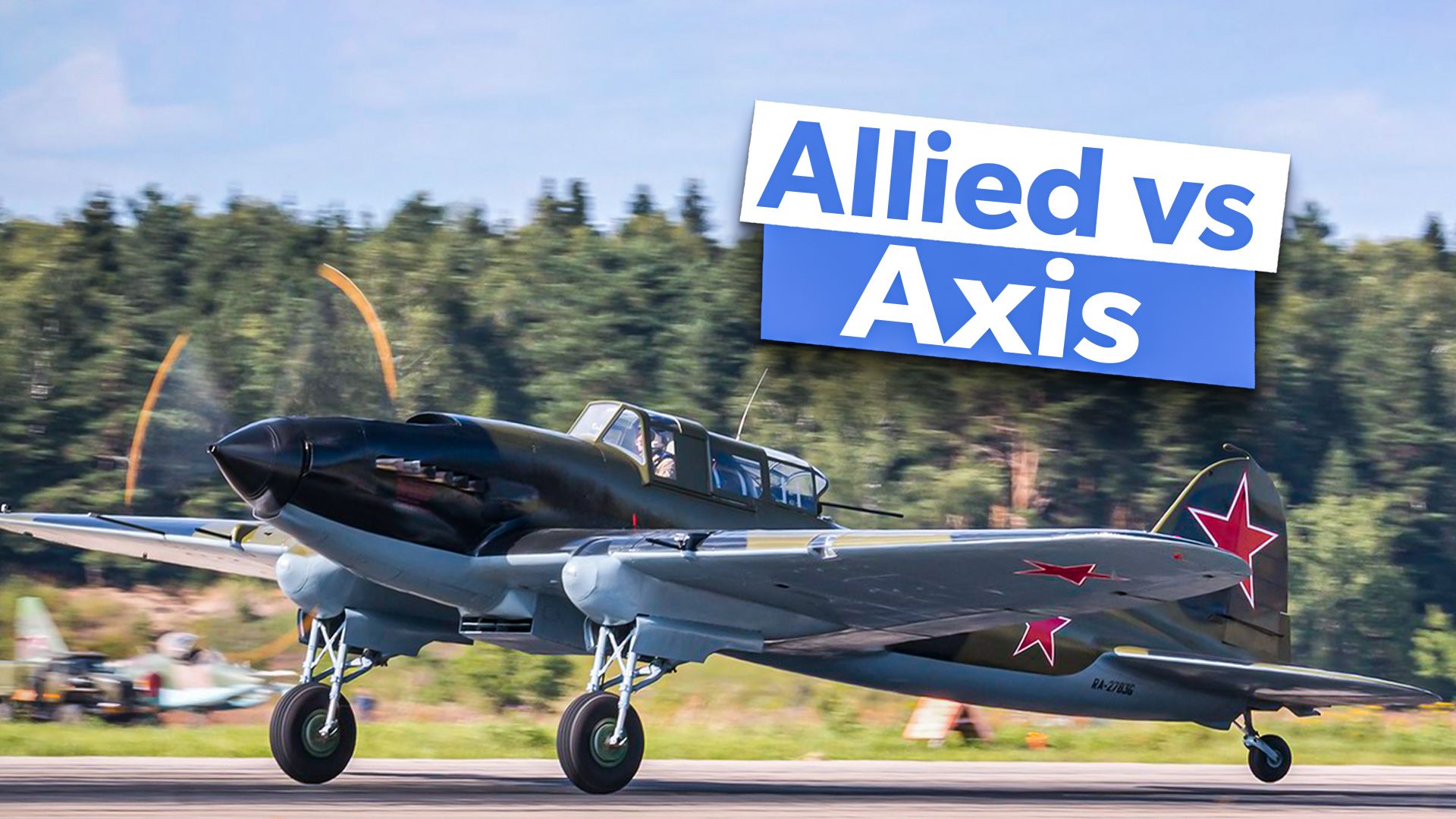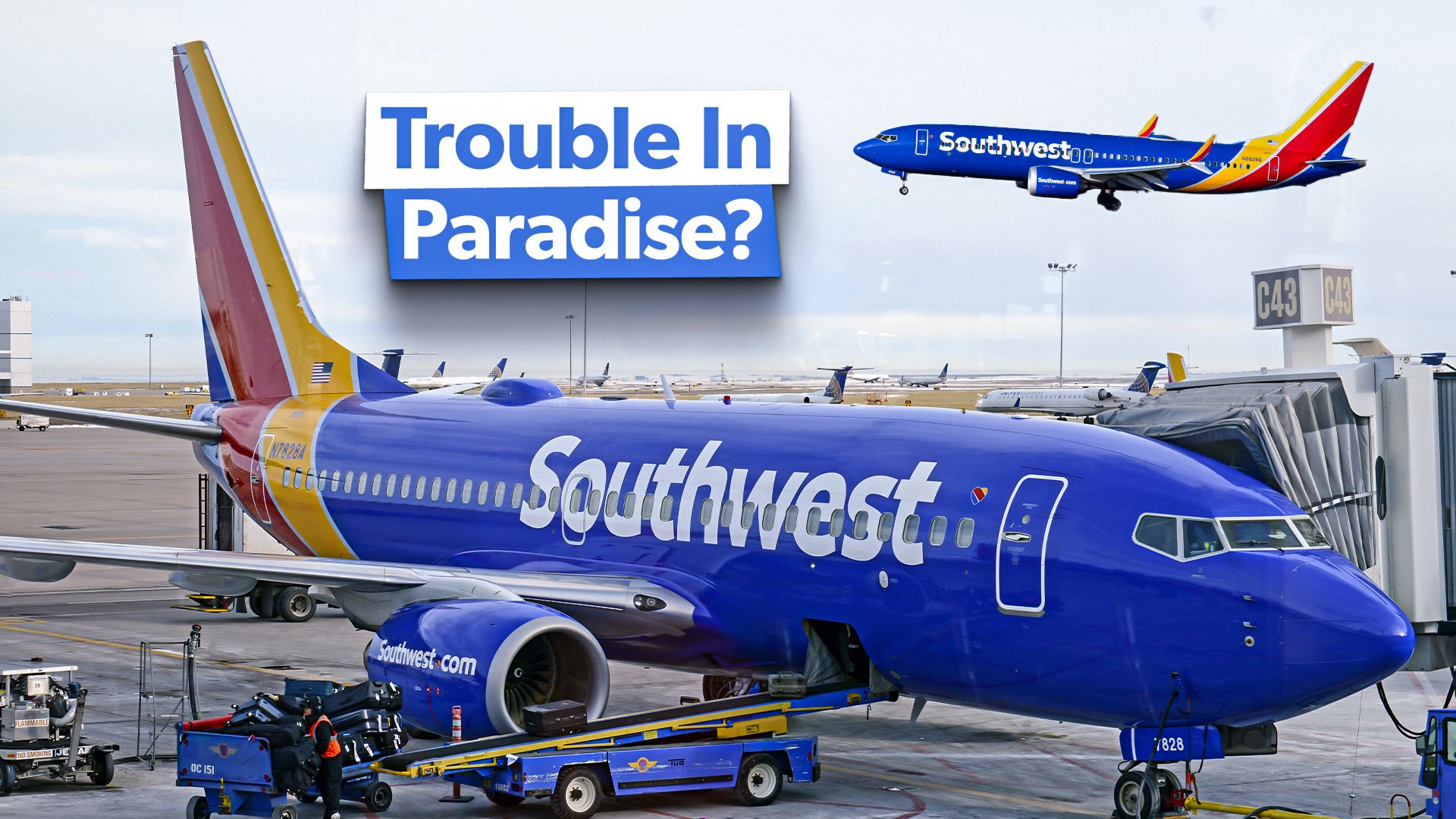Summary
- Aircraft carrier landings are challenging due to the minimal landing strip of less than 300 ft to 500 ft.
- The Lockheed C-130 broke records by landing on an aircraft carrier during the Vietnam War in 1963.
- Extensive training is conducted for pilots to be able to land on aircraft carriers, simulating real conditions.
Have you ever seen an aircraft carrier landing? How about witnessing one in real life? Regardless, it is one of the most challenging landings, primarily because of the minimal landing strip available. Fast fighter jets use a number of assistive mechanisms to touchdown at the right spot and come to a complete stop within the available distance of less than 300 ft – 500 ft (100 m – 150 m).
All planes that land on aircraft carriers are typically designed specifically with the purpose in mind, with larger wings, reinforced landing gear, and several other modifications. However, the largest aircraft ever to touch down on an aircraft carrier surely was not designed with such operations in mind. The Lockheed C-130, a cargo transport designed for the US Air Force in the mid-1950s, got a brief share of aircraft carrier action in 1963, taking off 21 times from the USS Forrestal.
At the height of the Vietnam War, these carrier landings were unlike anything the US carrier strike force had ever seen and did what many might consider impossible. Today, the C-130 maintains the record for both the largest and heaviest plane to land onboard an aircraft carrier. In this article, we will take a deeper look at the bizarre story of the Lockheed C-130’s carrier operations.
Aircraft carrier landing
- Aircraft are equipped with a tailhook
- Multiple arresting wires stretched across the carrier deck
- Arresting wires are attached to hydraulic cylinders
- Landing Signal Officers (LSOs) guide the plane in
Nowadays, aircraft carriers are the largest ships in any powerful navy and are protected by a number of different ships within a carrier strike group. Reconnaissance, fighters, cargo, and strike aircraft are all carrier-capable, and modern carriers have become fully-fledged cities at sea.
Photo: US Navy
However, the early years of US carrier operations involved significantly more experimentation. In the 1960s, teams at the US Navy wanted to test out different methods of carrier-based cargo transport and ultimately wanted to see just how far they could push the limits of tactical airlifters on their ships.
Get all the latest aviation news on Simple Flying!
The aircraft used at the time for carrier deliveries were heavily limited in both payload capacity and range. Thus, carriers cruising mid-ocean would be unable to resupply efficiently without moving closer to shore.
Photo: National Naval Aviation Museum
Thus, the bulky C-130 Hercules, with its extended range and massive payload, was selected for this operation, and a total of 21 different landings were performed in the Atlantic. The first of these such landings occurred on 30 October 1963, according to Together We Served.
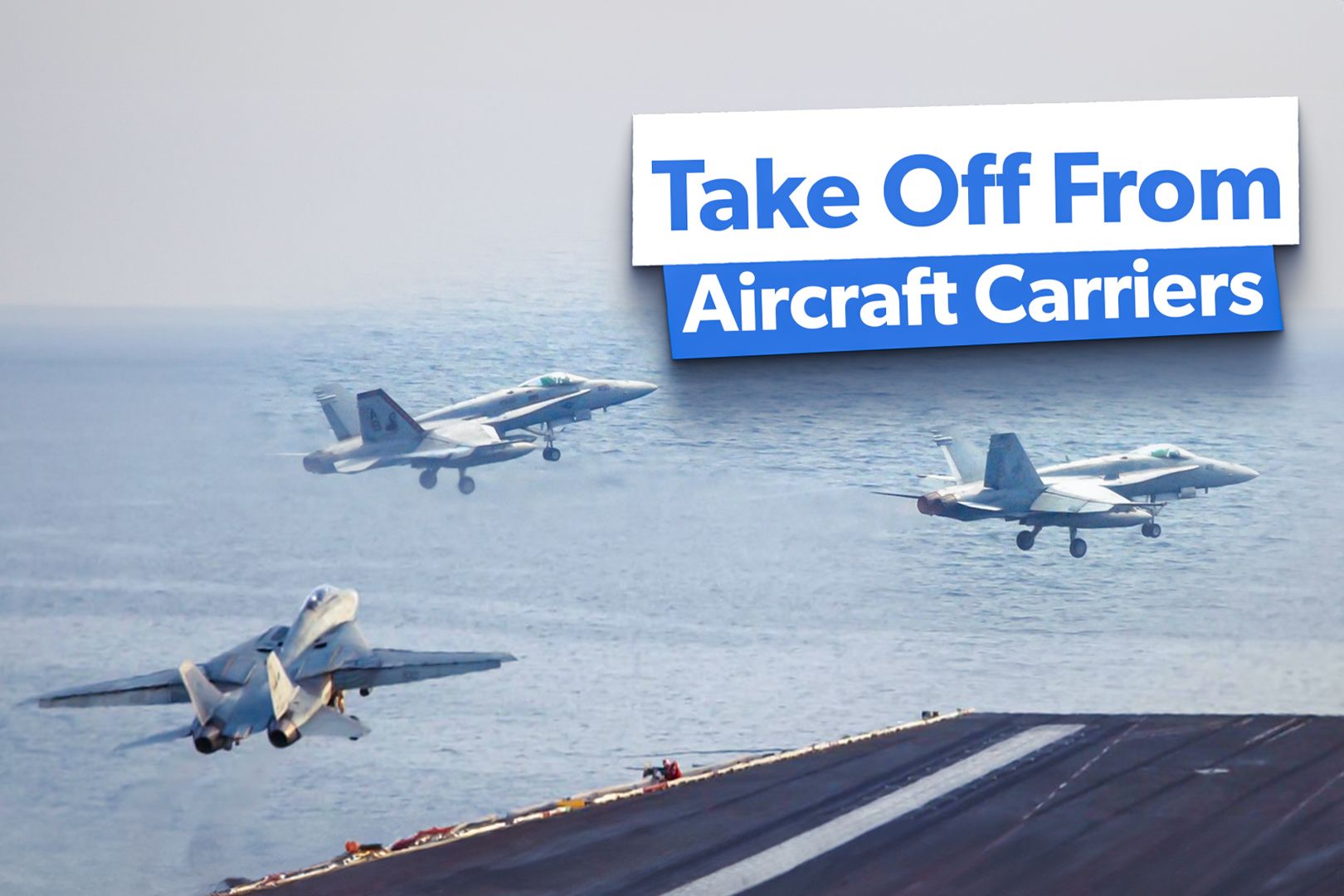
Related
5 Things You May Not Know About How Fighter Jets Take Off From Aircraft Carriers
Launching a jet from an aircraft carrier is a precisely choreographed process.
The pilot’s view
The pilot selected for this extremely daring task was Lieutenant James H Flatley III, who almost could not believe the job he had been assigned. Typically, a C-130 required over 3,500 feet of runway to take off, and the USS Forrestal was just over 1,000 feet long.
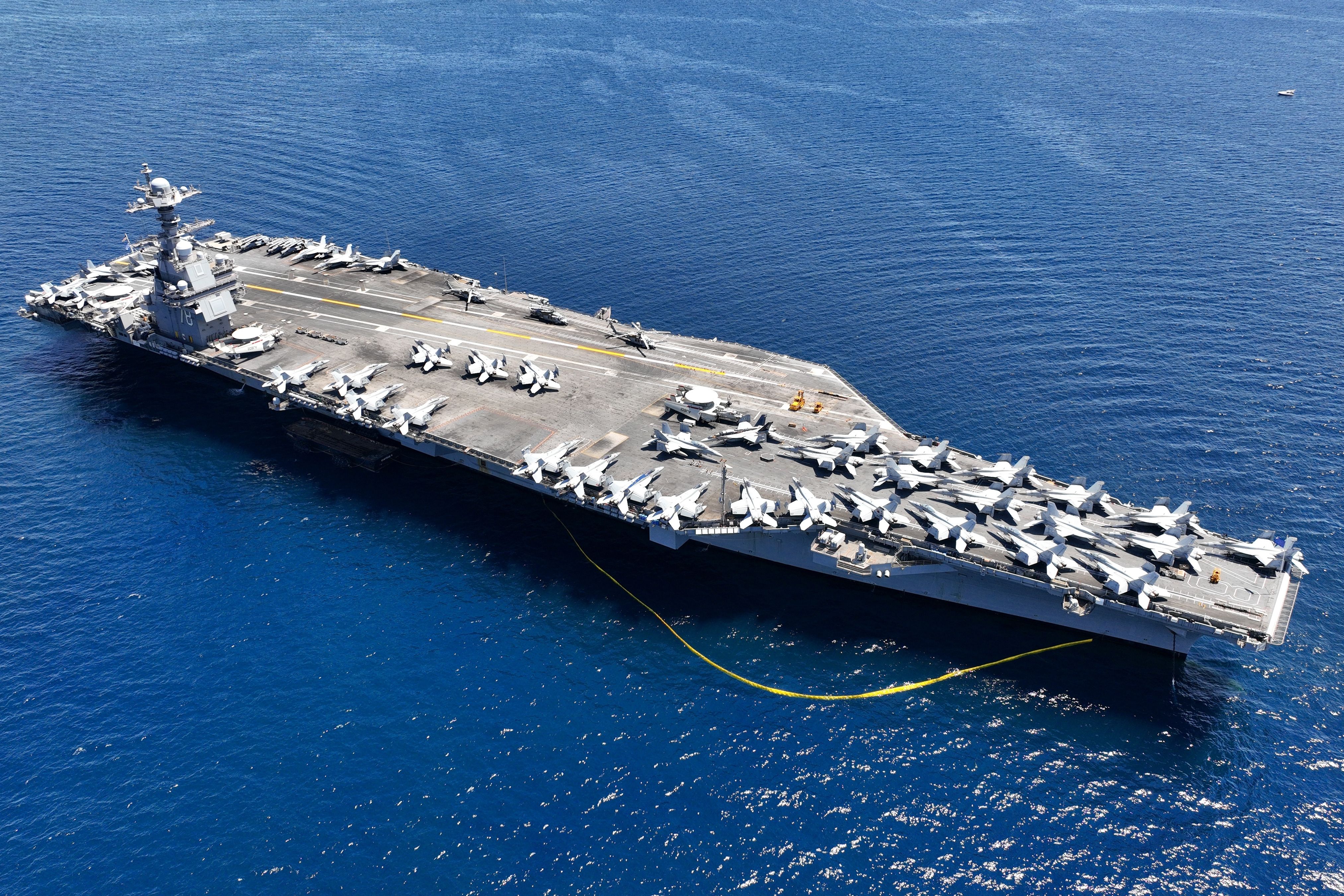
Related
How Are Unsuitable Planes Converted For Use On Aircraft Carriers?
Particular aircraft are built especially for aircraft carrier operations.
However, the Navy was not planning any ordinary C-130 for this landing, but rather a heavily modified aircraft. The quad-engine plane that ultimately performed these many flights was a modified KC-130F, a tanker that had been loaned out from the Marines.
Modifications to the aircraft were well underway by the summer of 1963, according to The Aviation Geek Club. The plane was fitted with new anti-skid brakes alongside a smaller nose landing gear orifice, and the C-130’s underwing fuel pods were removed.
Throughout the testing period, which continued until 23 October of that year, the Navy performed 29 touch-and-go landings with the C-130 and completed 21 unassisted takeoffs from the deck of the carrier. At 85,000 pounds, Lockheed engineers managed to get the plane to come to a complete stop in just under 300 feet, an incredible length as it was roughly twice the C-130’s wingspan.
Extensive training
Pilots go through extensive training to be able to perfectly land on aircraft carriers. These trainings are conducted at airfields that are simulated to resemble aircraft carriers, including the length and width. Many other conditions are simulated to allow pilots to practice as precisely as possible. According to the United States Fleet Forces Command,
“During field carrier landing practice (FCLP), pilots perform repetitive “touch and go” landings at airfields, which simulate landing on an aircraft carrier. FCLP is required flight training that precedes carrier landing operations and simulates, as near as practicable, the conditions encountered during carrier landing operations.”
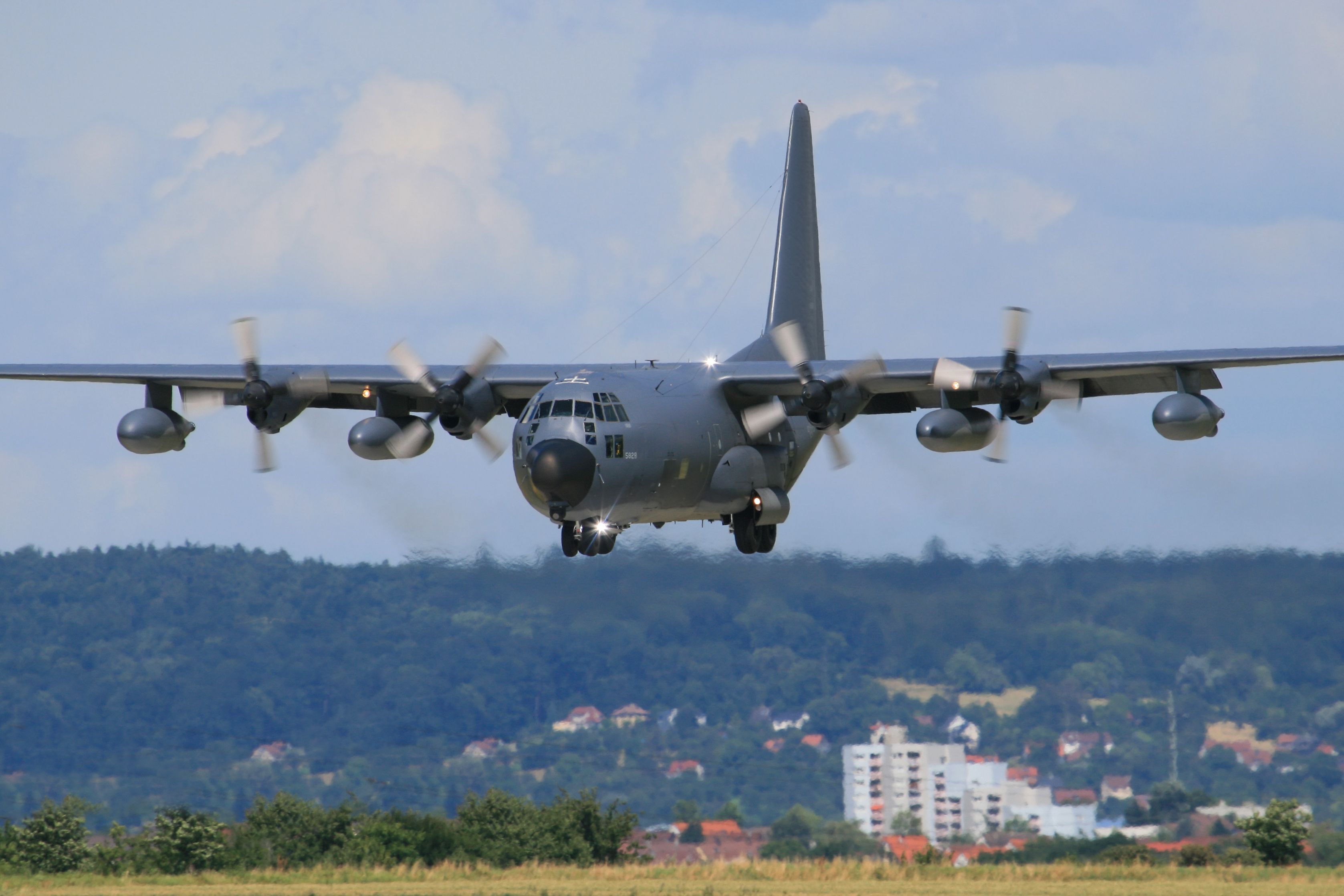
Related
Throwback: When The US Navy Landed A Lockheed C-130 Hercules On An Aircraft Carrier
The US Navy once conducted tests to determine the feasibility of using the C-130 at sea.
What are your thoughts on the C-130 Hercules landing on an aircraft carrier? Share your views in the comments section.
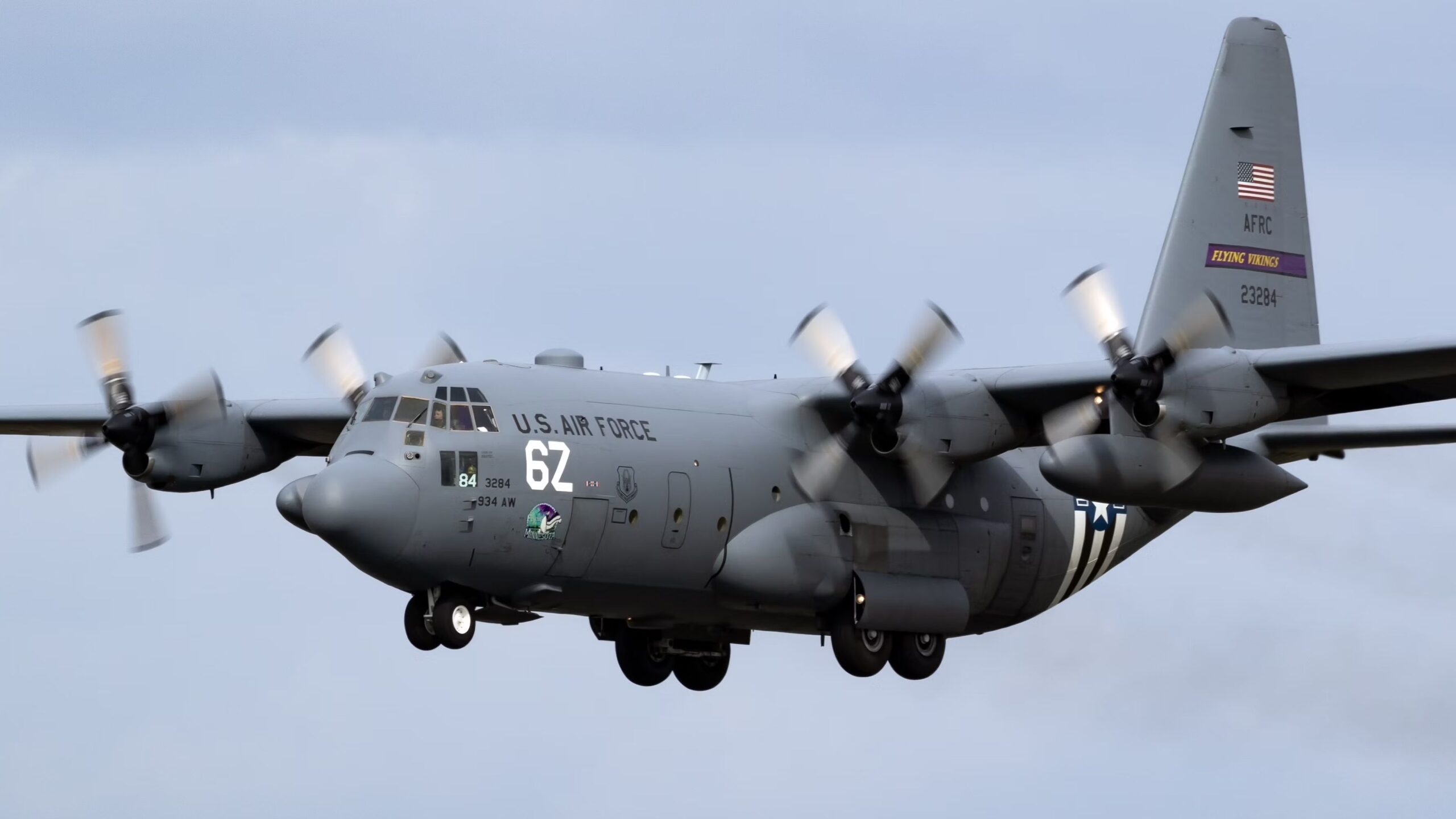
![7969027 - Flight Operations [Image 4 of 8] - An F/A-18F Super Hornet, attached to the “Blacklions” of Strike Fighter Squadron (VFA) 213, lands on the flight deck of the world’s largest aircraft carrier USS Gerald R. Ford (CVN 78), Aug. 12, 2023.](https://static1.simpleflyingimages.com/wordpress/wp-content/uploads/2024/03/7969027.jpg)

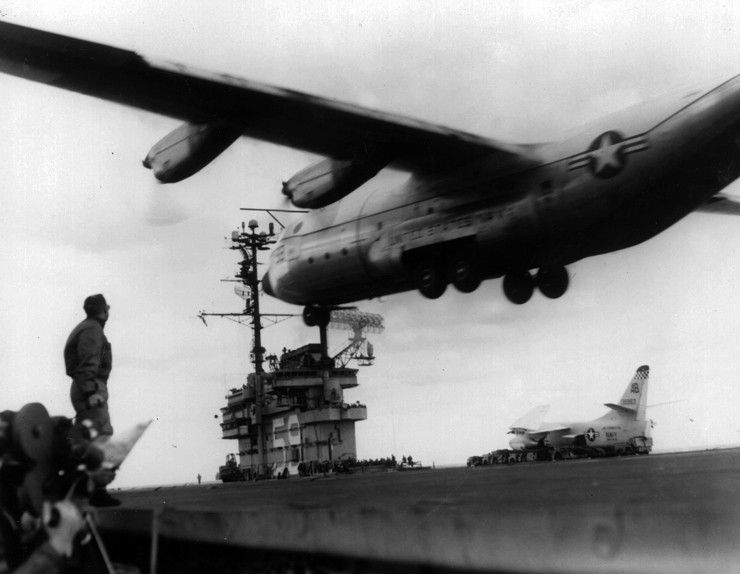
![8160637 - Santa 73: OCD23 wrap up with a multinational formation flight [Image 11 of 13] - Head On With Four C-130 Hercules](https://static1.simpleflyingimages.com/wordpress/wp-content/uploads/2023/12/8160637.jpg)
